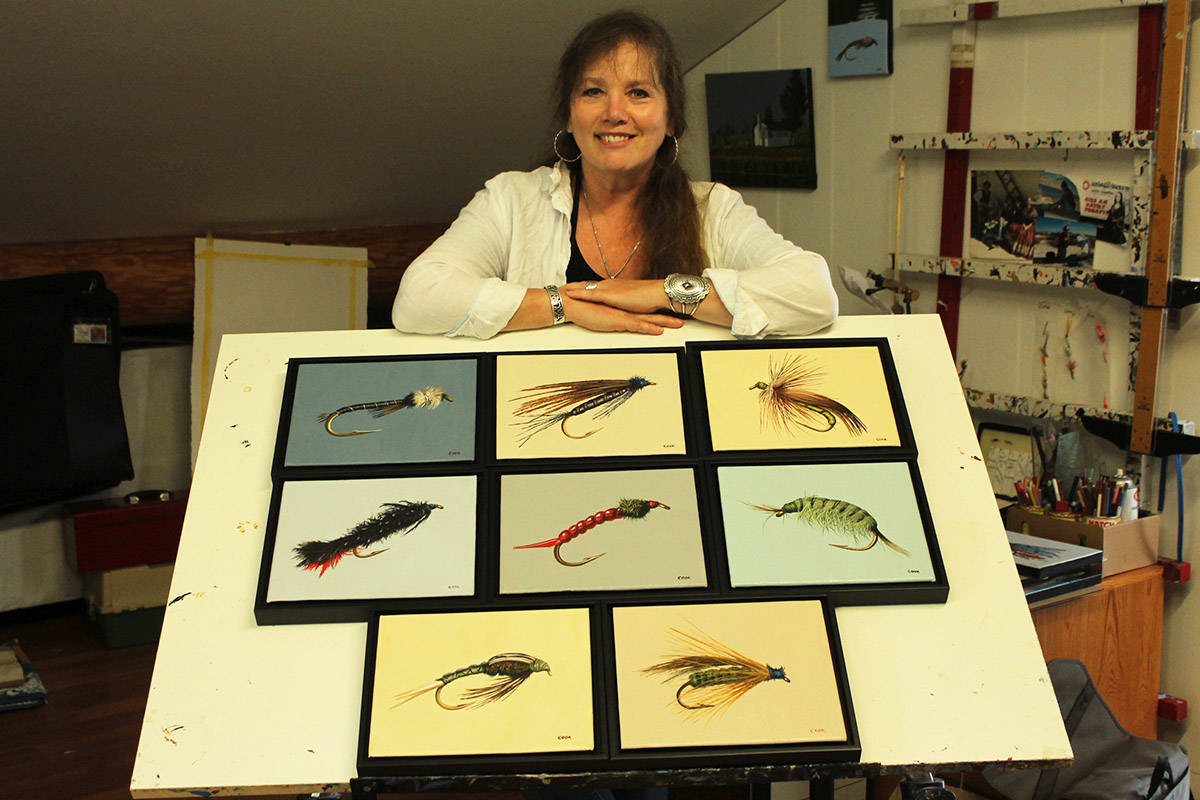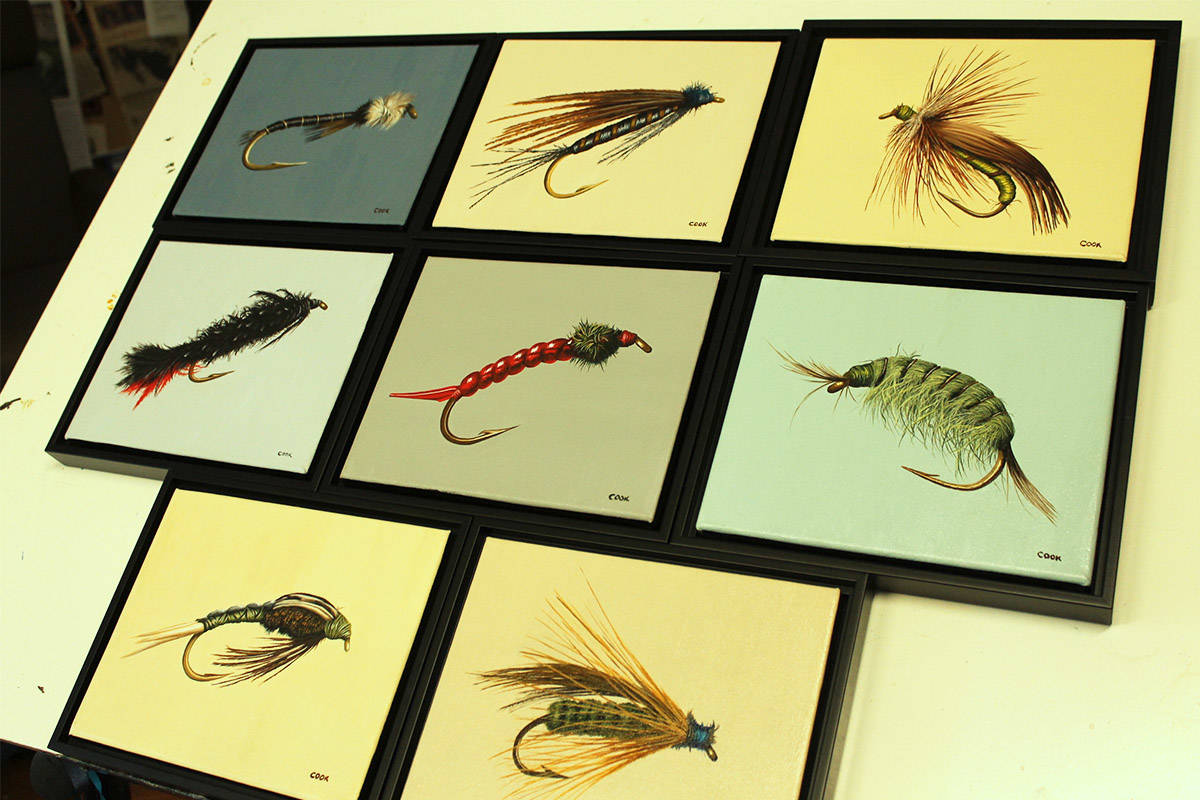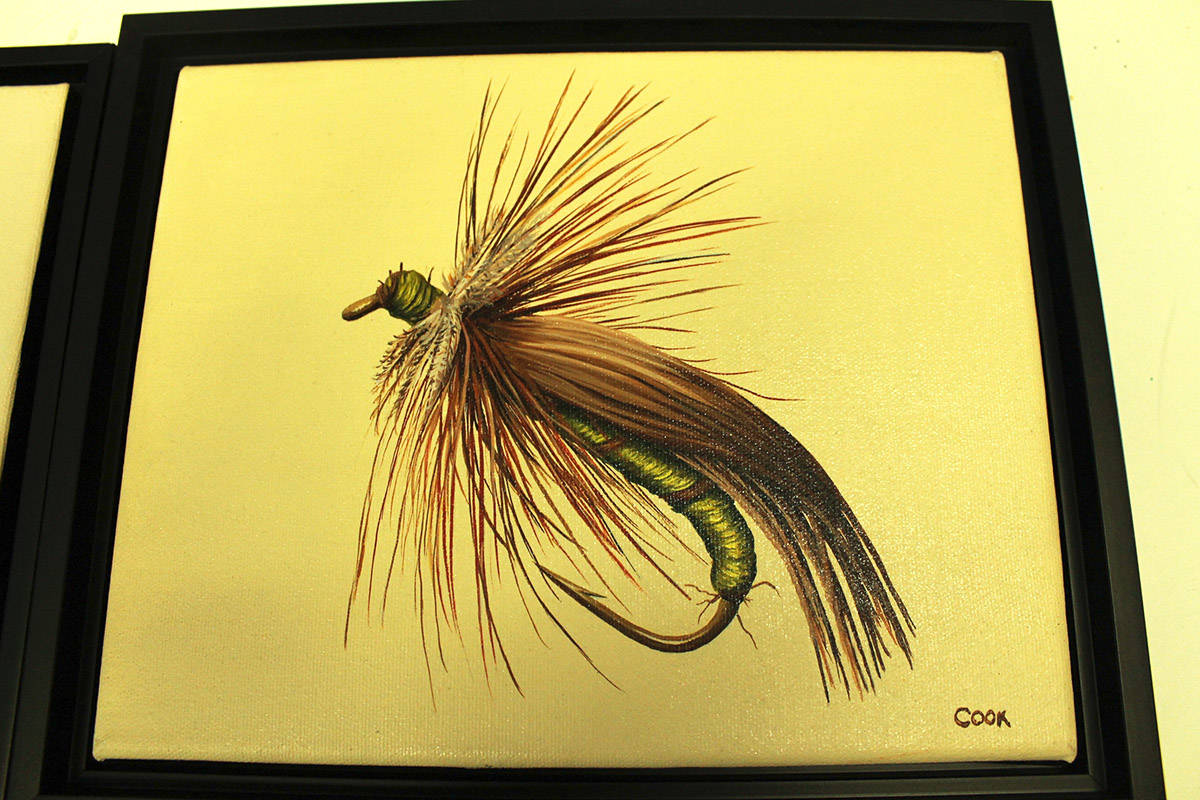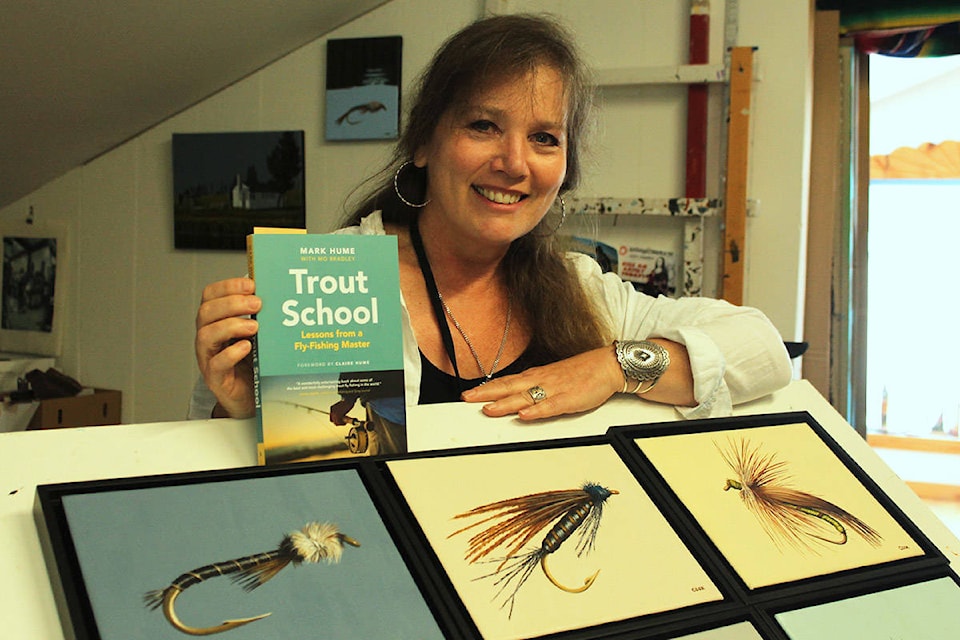To walk into Nana Cook’s house is to wander into a representation of a life well-travelled, and well-lived.
In her 22-year painting career, the Nanoose Bay artist has covered many subjects, but she’s never done anything quite like the project she just finished.
Cook is a full-time painter who recently spent several months creating 13 meticulous acrylic renderings of fly fishing flies tied by three B.C. anglers — Mo Bradley, Mark Hume and John Dexheimer.
The project started when Cook was approached by Hume, a longtime friend and B.C. journalist. Hume was writing a book about fly-fishing based on the wisdom of well-known fly fisher Mo Bradley of Kamloops.
Since the book’s publication in April 2019, Trout School - Lessons from a Fly Fishing Master has occupied the top spots of Amazon’s regional guides of Canada category. Trout School shot to #1 after its publication, and, at the time the PQB News went to press, sits in the #2 spot.
Hume had initially asked Cook to paint just one of the fly fishing flies. He sent her seven different flies to choose from.
If you’re familiar with fly fishing, you’ll know that a fly generally isn’t much larger than the tip of a pinkie finger.
It was a bit of a challenge for an artist who usually paints much larger things, like arbutus trees and Barkerville scenes. Some of the canvasses leaning on her studio walls almost brush the ceiling - but not the fly fishing ones, whose canvases are barely a foot long.
“It was fun. I didn’t need my ladder, which is always nice,” said Cook with a laugh.
Though small for her, Cook’s renditions of the flies are significantly larger than life, with fine details that the naked eye strains to catch in the originals. So she swapped out her ladder for a magnifying glass, using the magnification both to study the flies and paint underneath.
“You have to make sure all the threads are going the right way, and the number of wraps … I had to get them right,” said Cook. “It was really important to reproduce them accurately, and not interpret them.”
She also took close-up photos of the flies to make sure they were as accurate as possible.
“Just to be able to examine something that close, search for the details … there was like a challenge of making it correct. I wanted Mo and Mark to be able to look at those and go ‘perfect,’” said Cook.
Her work had the desired reaction. When Hume saw what she had done, he quickly sent her more.
The paintings are more than accurate - each fly takes on a character and life completely of its own. What were once bits of thread, fur and feathers are now small, richly textured creatures that pop off the neutral-coloured canvas.
“The book is great without the paintings, but people want to see what it looks like, to have a really detailed image that they can use as reference. Trout School … is instructional as well. Mo Bradley’s original information and drawings are in there, and then you have the painting image to look at and make sure your thread’s going the right way,” said Cook.
Cook says the illustrations themselves have been very well-received.
“People are so excited to see these flies. Anglers are really funny about their flies… there’s an obsessive quality to it. People are really proud to show you their flies.” said Cook.
“It’s phenomenal the talent - people get so into it.”
The book has detailed instructions on how to tie all thirteen flies, helped along by Cook’s illustrations.
In addition to that, it also shares the knowledge of Hume and Bradley’s years of fishing. Bradley is a particularly dedicated fly fisher. Despite being 82 years old and partially blind, he still gives fly fishing lessons, rebuilds rods and ties flies to donate to children. He spends two days a week working at Surplus Herby’s, a fly fishing store in Kamloops.
Cook says she would consider selling her renditions of the flies, but only as a full set of thirteen. Otherwise, she’s happy to keep them around. A fly fisher herself since 2014, the paintings are a personal representation of a meaningful time in her life.
“If I don’t sell them, then I’m going to hang them on my wall. Because I love them,” said Cook.
She’s already embarked on her next big project, locating and painting renderings of old churches across B.C.
Asked if she will continue to paint flies, Cook cracks a big smile.
“Oh yeah. Oh yeah,” she said.



